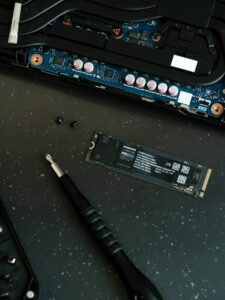How to Personalize the Context Menu That Appear When You Right-Click in Windows 10

How to Personalize the Context Menu That Appear When You Right-Click in Windows 10
Why Should You Personalize the Menu That Appear When You Right-Click?
It is quite likely that you make extensive use of the right-click context menu on a Windows 10 personal computer on a daily basis. This is true regardless of whether you are renaming a file, creating a new folder, or opening anything with a certain application. On the other hand, this little menu has the potential to become crowded or to seem incomplete over time. Perhaps you would want it to include shortcuts that you use often, or you might want to delete items that you never use.
The good news is that you have the ability to modify the menu that appears when you right-click. It’s not only about how you appear; it’s also about how efficiently you operate. You can make the menu more efficient, more aesthetically pleasing, and more helpful with only a few adjustments.
What Is the Context Menu That Has the Right-Click?
The little box that shows when you right-click on your desktop, a file, a folder, or inside an application is known as the right-click context menu from the context menu. Depending on what you select, its choices will vary, but by default, it will feature things such as “Open,” “Copy,” “Paste,” “Properties,” and “Send to.”
This menu contains items that are unique to applications such as WinRAR, Dropbox, and antivirus software, amongst others. At other times, it is nothing more than clutter that isn’t essential. Sometimes it might be useful. If you have ever right-clicked and seen a big list of choices that you have never used or are unfamiliar with, then you understand what I mean.
Why You Might Want to Make Changes to It
The following are some of the reasons why you should learn to manipulate your context menu:
- By deleting entries that aren’t essential, you may improve speed.
- Include helpful tools or shortcuts that you utilize on a regular basis.
- Programs that have been uninstalled should have any duplicate or obsolete settings removed.
- Adjust your workflow so that it corresponds with the way you use your computer.
- By streamlining the menu, you may save time and give the impression that your computer is more organized.
Add or remove items is the first method. Utilization of a Context Menu Editor
The use of a third-party context menu editor is the method that is both the most straightforward and secure for modifying the right-click menu. You are possible to activate, disable, or add things without having to touch the Windows Registry by using tools such as Easy Context Menu, ShellExView, or CCleaner.
Take, for instance, the Easy Context Menu scenario:
- Start the tool and choose the actions you wish to be shown in the menu (for example, “Copy to Folder” or “Command Prompt here” should be selected).
- To apply the changes, click here.
- Whenever you right-click anywhere, you will notice your menu changed.
- These tools are not only free but also portable and easy to use, making them ideal for novices who are looking for results quickly.
Manually Editing the Windows Registry is the second method accessible to advanced users.
Through the use of the Windows Registry Editor, you have the ability to manually alter the right-click menu if you are comfortable doing more in-depth system modifications. However, use caution since making an error in the registry might result in problems with the system. Make sure you always start with a backup.
In order to eliminate unnecessary entries:
- After pressing Windows and R, type regedit and then click Enter.
- To access the following keys, go to:
- Shellex is located in the HKEY_CLASSES_ROOT directory.Holders of the ContextMenu
- Keyboard shortcut: HKEY_CLASSES_ROOT\Directory\Background\shellexHolders of the ContextMenu
- Find the folder (key) that corresponds to the name of the item that you want to delete from your collection.
- Select the Delete option from the context menu.
For the purpose of adding a new item, such as launching Notepad with a single click, you will be required to generate new keys and values under the HKEY_CLASSES_ROOT\Directory\Background\shell directory. If you wish to add anything, it is advisable to check up detailed instructions on the internet.
Use the “Send to” Folder for Quick Access; this is the third method.
Modifying the “Send to” submenu is a less dangerous approach to alter the choices that are available to you when you right-click. It is likely that you have encountered it when you right-click on a file and choose “Send to > Desktop” or “Send to > Compressed folder on your computer.”
This is the place where you may put your preferred tools or folders:
- While holding down the Windows key and the R key, type shell:sendto and then hit Enter.
- It will open the folder labeled “SendTo.”
- Shortcuts, such as those for Notepad, custom folders, or external drives, may be dragged and dropped into this folder.
- It is now possible to transmit a file to various places in a short amount of time by right-clicking on the file.
- When it comes to making your menu more practical, this is an excellent low-risk method.
Special Hint: Restore the Context Menu to its original state.
In the event that you ever make modifications and something does not function as planned, or if you wish to return to the initial layout of the menu, you have the ability to reset the menu. If you manually altered the registry, the most secure method to do this is to either restore a backup of the registry or reverse the changes you made using the program that you used.
Additionally, if things become extremely chaotic, utilizing System Restore might be of assistance in restoring everything to its usual state.




